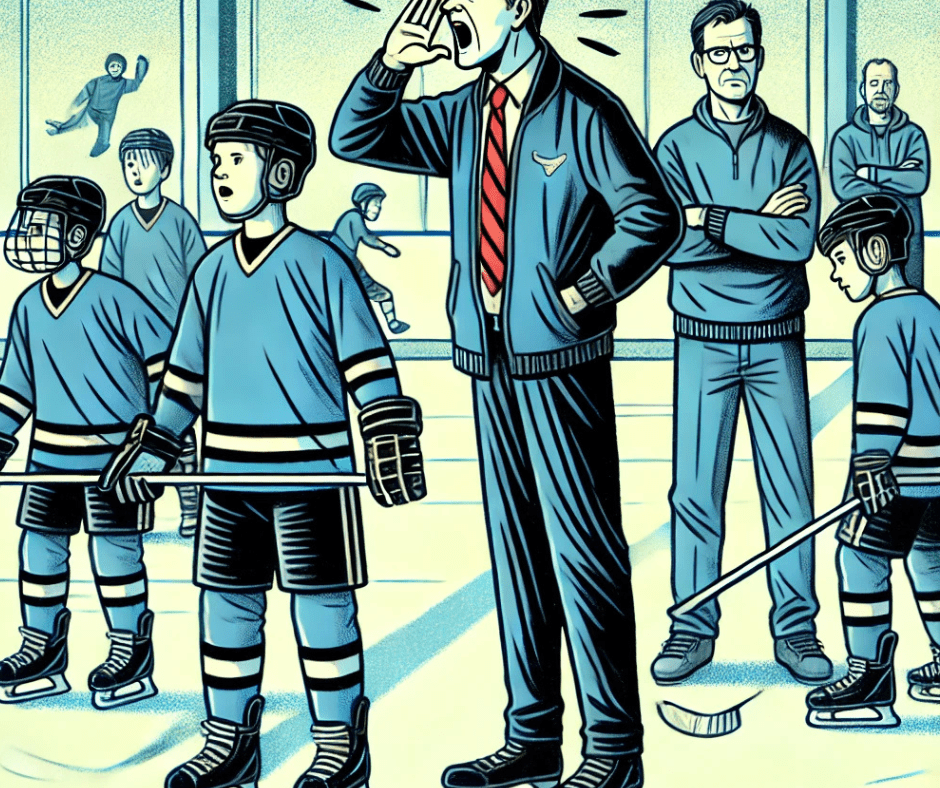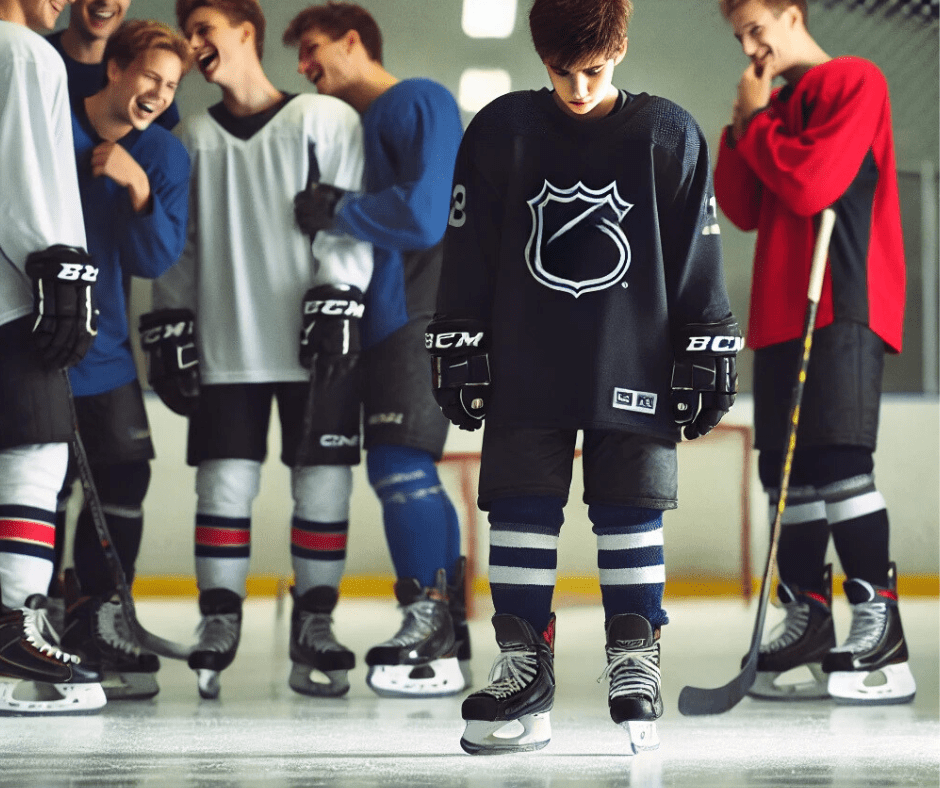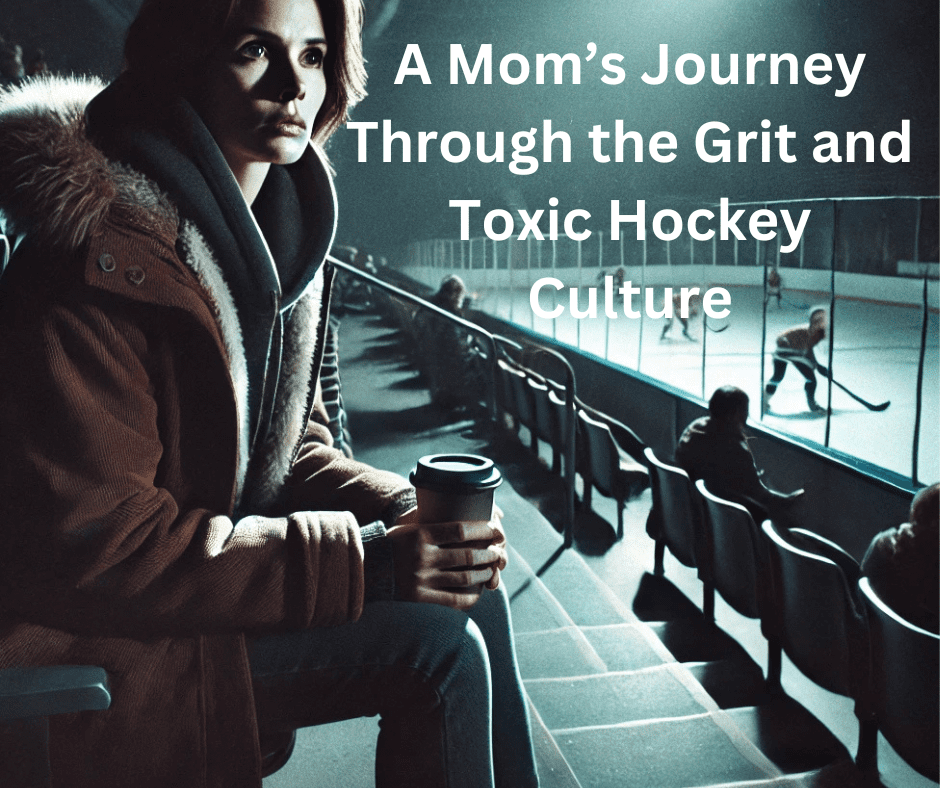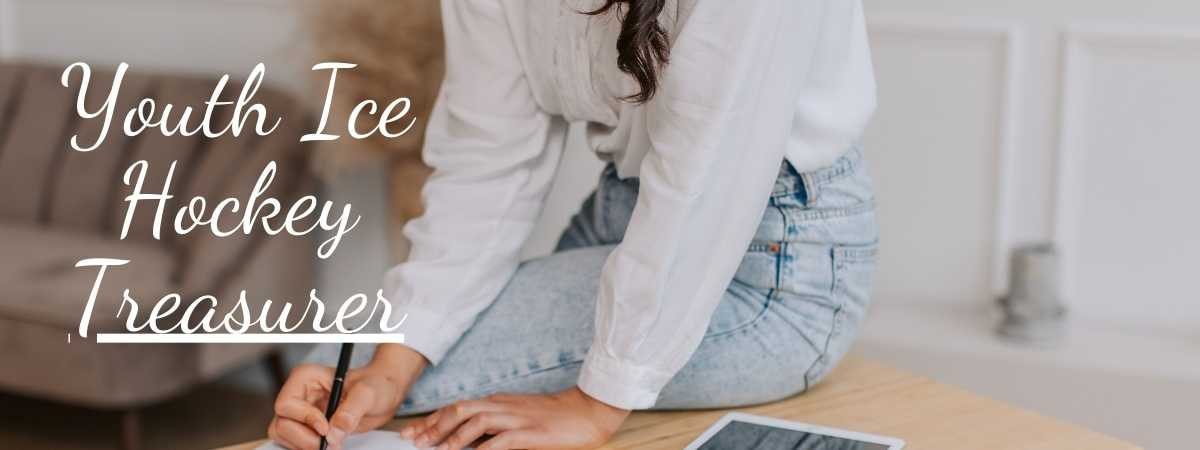Nothing could have prepared me for the harsh reality of the toxic culture my son and I encountered in Ice Hockey. It was a crushing disappointment, a rude awakening that shattered my once-naive belief that some adults would not innately care about fostering the growth and development of kids and teens.
Let it be said that, like many communities in humanity, there is a duality of the good and the bad, and that goes for Hockey as well. So, we will keep that in mind as we examine the slightly less-than-optimal side of youth sports.
The stories that led me to write this article were ones I had witnessed. They are sobering from bullying, belittlement, hazing, and mental and emotional abuse. From the bench and locker room to the National Ice Hockey organization, kids and parents do not only not feel heard or validated.

As a single mother new to the Hockey community, I found I must find a delicate balance between nurturing my child’s passion and helping them navigate the sometimes harsh realities of the hockey world. And then I had to get real and tough with myself as a parent—when does it all become too much to tolerate? I quickly learned what it feels like to be quiet by the unspoken rules of being a sports parent. Don’t say a thing….or they’ll bench your kid, or worse, they won’t even make the cut at next season’s tryouts. But, then when would keeping quiet make me a bad parent supporting a dysfunctional community?
I felt silenced as I wrote check after check, pouring thousands of dollars into a system where it felt like my son and I were expected to endure emotional and mental abuse at times.
One might expect the ice itself can be at the root of all danger of this sport. So, we wrap them with hundreds of dollars of protection from head to toe. Yet, there is nothing parents can do to protect the mind and soul that some children have reported happening in the locker room. The locker room mentality can be like a greenhouse of toxic behavior that extends beyond the doors to the offices and board rooms.
Hockey’s Charm and Enchantment
Hockey is more than just a sport for these kids—it’s a passion that takes hold early and doesn’t let go. It’s the thrill of skating fast, the feel of the puck on the stick, and the dream of scoring that game-winning goal. For many young players, the rink becomes a second home, where every practice and game is a chance to prove themselves and be part of something bigger.
The sense of camaraderie, competition, and sheer love of the game fuels them to push harder, play smarter, and grow stronger, both on and off the ice. It is where you begin to cherish the hockey community.
When he first hit the ice, it was all charm and excitement—a picture-perfect start to his hockey journey. I’ll never forget the day my son first stepped onto the ice as a Mite. His eyes were wide with wonder and excitement, filled with the kind of dreams only kids can have.
He was small, wobbly, and unsure, but in his mind, he was already skating toward that breakaway goal, imagining the crowd cheering him on. From that moment, I knew hockey had ignited something in him that was bigger than just a weekend activity—it was a fire that would shape his childhood.
As a parent, there’s nothing I want more than to nurture that passion, to watch him thrive in something that brings him so much joy. I want to see him build confidence, learn resilience, and feel the rush of doing something he truly loves.
It’s not just about the wins or the goals scored; it’s about watching him grow, work hard, and, most importantly, be happy. Hockey isn’t just a game—it’s a journey, and being there to support him every step of the way is a privilege.
Hockey was not always and still is a wonderful sport that has positively developed my son and added depth to his athletic abilities. More time is spent smiling and cheering, than hanging your head. His first few years of Hockey were nothing but true bliss. The kids looked adorable in their oversized gear and the parents were still in the locker rooms. An important point made here.
When Did Hockey Behavior Change?

Great Question! I wish I could put my finger on it – but age had something to do with it or the emotional and ego stakes got higher for some bad actors in the hockey community as he aged.
My best guess would be pre-adolescence. Parents begin to dream of seeing their kids’ names in lights and some coaches want to build a legacy or resume, Organizations want positive PR to recruit. It becomes an unending ladder for more and more. There is a lot of ego in youth sports, but I am pretty sure it is not the kid who is 10 years old.
As much as hockey is a passion, there’s an undeniable harsh reality that comes with it. The sport, known for its intensity and physicality, quickly shifts from fun to fiercely competitive. In many cases, the focus moves away from nurturing a child’s love for the game and instead prioritizes “toughening them up.”
Teams often breed a cutthroat atmosphere where mistakes are seen as failures rather than opportunities to learn.
The pressure to win overrides the value of personal growth, and it’s not just the players who feel it—parents and coaches are swept up in this culture of competitiveness, too.
My son has felt the sting of this reality firsthand. He’s been overlooked for playing time, often because the coach prioritized those with more immediate results over those still developing. There have been moments when harsh words from the bench took the place of encouragement, leaving him disheartened.
The sheer joy of playing sometimes feels overshadowed by the constant pressure to perform, as if every shift on the ice is a test of whether he’s worthy to be there.
It’s a tough environment for any kid, and as a parent, watching him struggle with this pressure is heartbreaking.
It wasn’t until many years later that we discovered his struggles were due to learning disabilities, which weren’t diagnosed until early adolescence. This left me wondering how much those undiagnosed challenges affected his experience in sports. I soon realized that some sports environments were more accepting than others. Sadly, hockey—the sport he loved most—wasn’t one of those tolerant spaces. At times, it felt like the Wild West of toxic behavior, where unchecked aggression and harsh treatment were the norm.
If only they knew how much effort he put in—how difficult it was to hear him talk about enduring the coach’s yelling, belittlement, and being told he was only on the team to give the top lines a break. He proved them wrong in the end, but it was during this time that I finally spoke up.
The backlash was immediate. I felt the sting of being isolated from the other parents. The coach denied his behavior, and the hockey director dismissed it as “passion.” The league never even acknowledged my concerns. Keeping him on that team felt like a betrayal to my values as a parent, condoning behavior no person—especially not my 14-year-old son—should have to endure.
He showed them and the following year jumped from A to AAA.
The Dirty Breakdown:
While hockey is also a contact sport, the physicality in hockey is more fast-paced and can involve calculated risks, such as checking and fighting. The culture of “enforcers” and the acceptance of fighting creates a unique aspect of toxicity, where players feel obligated to defend themselves and their teammates physically, often leading to aggression both on and off the ice. The emphasis on “grit” and “toughness” in hockey can sometimes lead to emotional isolation, especially for younger players.
Coaching:
Hockey coaching behavior, particularly in youth hockey, often mirrors the sport’s professional ranks, where there is a strong emphasis on “mental toughness” and pushing through adversity.
While hockey coaching can also be harsh, a unique feature is the silencing of complaints, where problems like mental health, emotional well-being, or toxic team dynamics are often ignored or minimized by coaches and administrators
HockeyTeam Culture and Hazing:
Hazing in hockey is also problematic but tends to revolve more around locker room culture and emotional abuse. While physical challenges exist, emotional isolation and bullying within the team are more common. Players often feel pressure to conform to unwritten rules of behavior, and stepping outside these norms can lead to ostracization by teammates.

The pressure to perform in hockey doesn’t just come from coaches or parents—it often comes from teammates, too.
There’s an unspoken expectation to keep up, to always push harder, and to prove yourself worthy of being on the team. When mistakes happen, some kids feel the sting of frustration from their peers.
The pressure to be flawless can be overwhelming, especially when you know a slip-up might not just cost a goal, but also the respect of your teammates.
What’s even harder to witness, though, is when that pressure turns into teasing or bullying. Seeing teammates tear each other down instead of building each other up is disheartening.
The anger swells when you watch a kid being mocked or pushed aside because they don’t meet some arbitrary standard of toughness or skill.
That kind of cruelty can crush a child’s confidence and love for the game. It’s painful to see, especially when you know that hockey is supposed to be about teamwork and camaraderie, not tearing each other apart.
Hockey Player Expectations and Mental Health:
In hockey, while physical toughness is also highly valued, the mental health aspect is often more hidden. Players, particularly at the youth and junior levels, may experience mental health struggles related to team isolation, competitive pressure, and a lack of emotional support. This can create a toxic environment where players hesitate to seek help or feel that their call for help is truly acknowledged.
Many unfiltered social media posts by Hockey Parents complain of the “don’t care culture” when issues attempt to be escalated via the organization, or league.
Hockey’s toxicity revolves around the culture of silence and enforced grit, where fighting and aggression are normalized, and emotional needs are often suppressed or ignored.
The Stats on Hockey Culture
Toxic hockey culture profoundly affects youth participation, contributing to a higher dropout rate.
When kids are repeatedly exposed to bullying, hazing, or relentless pressure from coaches and teammates, they can lose the passion they once had for the game. The emphasis on toughness, both physically and emotionally, creates an environment where many young players feel isolated and unsupported.
This culture can cause children to quit the sport, no longer finding joy in playing due to fear of judgment, ridicule, or mistreatment. A 2022 report by the Aspen Institute found that many kids drop out of sports when the environment becomes too intense, suggesting that hockey’s emphasis on grit and perseverance at the expense of mental health is a significant factor, The Aspen Institute.
Beyond immediate withdrawal from the sport, the emotional and psychological toll of a toxic hockey environment can linger for years. Kids who experience bullying or harsh coaching in hockey are more likely to struggle with self-esteem and trust issues, which can extend well into adulthood.
These mental scars often remain long after the final buzzer, as players internalize the belief that they must suppress their emotions to fit in or succeed. Studies on sports-related bullying and hazing show that the trauma experienced in youth sports can result in lifelong impacts, affecting mental health, personal confidence, and overall well-being, Grow The Game and Live Like Sam.
We crawled the internet for some more statistics related to sports-wide culture, it is a bit grim:

Can Hockey Culture Be Fixed?
Youth hockey organizations, frequently emphasize grit and mental toughness as hallmarks of the sport, but this focus can sometimes turn into a breeding ground for toxic behaviors that go unchallenged. From outdated ideas of masculinity and romanticizing the tough grit that prioritizes winning at all costs, parents are left questioning whether their child’s passion for the game can survive the very systems meant to support it. The challenge for parents is navigating these murky waters while advocating for their child’s love for hockey in a world that often feels more about surviving than thriving.
I truly believe there’s still hope. Over time, we’ve seen a shift in how we approach healthier behaviors and mindsets in so many areas of life, and I believe hockey can change, too. If the leadership within organizations took real action—swift and consistent consequences for toxic behavior, backed by USA Hockey—I know we could push the sport forward.
Safesport offers the kind of insights we all need to embrace, guiding us to pause and think before reacting in anger or frustration. Hockey deserves better, and I still have faith that change is possible. Despite everything we’ve faced, I believe the sport can evolve into a safer, more supportive space for everyone.
References:
- Aspen Institute. (2022). State of Youth Sports: Parents, Policymakers Better Appreciate Physical Activity, Face Barriers to Help Kids Play. The Aspen Institute. Retrieved from https://www.aspeninstitute.orgThe Aspen Institute
- Live Like Sam. (2023). The Impact of Bullying in Youth Sports. Retrieved from https://www.livelikesam.orgLive Like Sam
- Safe Kids Worldwide. (2024). Staying in the Game: Changing the Culture of Youth Sports Safety. Retrieved from https://www.safekids.orgSafe Kids Worldwide
- Grow the Game. (2021). Game Misconduct: Hockey’s Toxic Culture and How to Fix It. Grow the Game. Retrieved from https://www.growthegame.hockeyGrow The Game
- Broad Street Hockey. (2019). NHL FanPulse: The Duality of Hockey Culture. Broad Street Hockey. Retrieved from https://www.broadstreethockey.comBroad Street Hockey




You are more optimistic than I am. USA Hockey is as useless as the organizations themselves when addressing these issues, some of which ARE criminal in nature. When a “head coach” doesn’t even have a CEP# from USA Hockey but is still allowed to coach you know the system is rigged. They don’t care as long as the checks clear. We’re done.
Thank you so much for this article. My son is 13 and was a goalie for AA team this year. He is small for his age right now but super agile and a great goalie. Long story short, his coach favoured the other goalie for size and gave him the vast majority of playing time. My son has felt so defeated because he works hard and has good results but it does not matter to the coach who says he needs someone ‘intimidating’ in net. They recently completed a playoff round where my son was given 0 of 5 games. He feels alone on this team and completely unacknowledged by his coaches. We could not ask him to go back to that so he is done for the rest of the season. It’s completely affected his self esteem and love of sport.
When I sent a message to the team advising he would not be returning because of his experience this year I was met with criticism and a ‘never quit on your team’ and ‘never publicly criticize the coach’ mentality. Now, I’m the ‘crazy’ hockey mom.
Wow, talk about gaslighting!
I guess my response to them, would be “never quit on a kid”…. But, they did. They quit on your son, destroyed his self-confidence and innocent love for a game with his peers.
“Never criticize a grown man (the coach)”, but said coach will let a child sit in humiliation by exclusion? That is cruel and demeaning to a kid.
I am so very sorry for him and you.
Your son has learned how to never make anyone else feel, and that his Mom has his back. Good job.
My son has always been bigger for his age. As a result, refs and opposing coaches have picked on him with “special penalties” and taunts that he is too big to play. He’s been called names, the “gentlest” being “fat”, and has left arenas crying so many times.
If a smaller child collides with him, my son gets a penalty. If my son splits the little D and one falls, he’s gets a penalty. He’s been ejected from games for collisions and even suspended. The league says he “should be more aware of his size”.
I thought all players are taught to keep their heads up and be aware?
It’s so heartbreaking for me to watch my son treated this way when all he wants to do is play hockey. He’s turning 12 but it may be his last season:( I have no idea what is left to do when his own team leadership will not help and there are no other rinks or teams in the area to go to.
Oh I am so sorry to hear what your son is going through – and a Mother who has to witness this. I recall sitting with parents of bigger players, and it is so hard for the players and parents during a very special developmental period – 12 years old is not easy for anyone!Some kids shoot up, some kids are late bloomers physically.
I am not sure if adults do not hear what is coming out of their mouths when they put “adult” expectations on a kid who is also developing both physically, emotionally and in sports. He is only 12. So heartbreaking, that the organization can not themselves be more evolved to recognize he is just a child. It is extremely disappointing that they are not recognizing this and advocating on his behalf. My thoughts are with you and your son!
Hi Jennifer,
Yes, my experience as well. When it got “too toxic”, I felt the mental health of my son and myself was more important than whatever some of these irrational parents thought. I choose to leave. My son was good enough to get on other teams and enjoyed it so much more. We never looked back, except WHY did I stay so long…hoping it would get better. Geez, sounds like a dysfunctional relationship! No sport that we pay thousands of dollars for, should send us driving home in tears.
It came to my realization, that if I left him in the hands of an organization that did this to us, I was not being a good parent.
Believe me, there is another life at another rink! Never settle!
Wow, as I read this, I kept thinking, “Did I write this?” This article was dead on with all the issues, especially when being the one parent trying to advocate for fair and fun ice time for all players. I had no idea speaking up for the quieter part of te team would make me the rink enemy with multiple parents telling me my kid will never make the travel team, and that I cannot even go to find a new rink because they will make my life hell”. I am at a crossroads leave the rink and drive even farther for a new rink, or “man up” and hold my families place in the toxic rink.